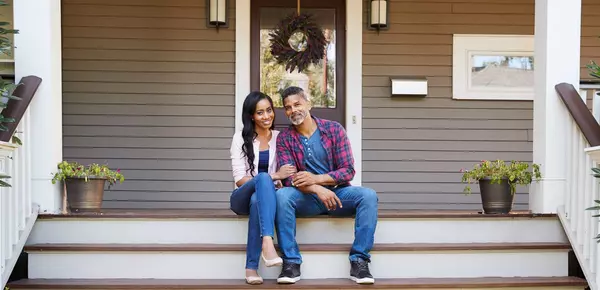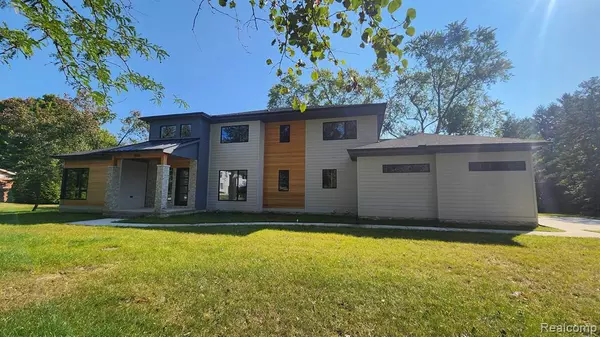
Search. Buy. Sell.
Find your Dream Home here.
And we'll get you into it fast and easy.
Trending Homes in Oakland County, MI
Newest listings to hit the market, updated every 7 minutes
- 1/56 56
 New
New$ 610,000
4 Beds3 Baths2,066 SqFt48770 THORNBURY Drive, Novi, MI
Single Family Home
Listed by Griffith Realty
- 1/38 38
 Coming Soon
Coming Soon$ 575,000
3 Beds4 Baths2,226 SqFt2673 JOHN WARREN Drive, West Bloomfield, MI 48324
Single Family Home
Listed by KW Metro
- 1/98 98
 New
New$ 2,095,000
5 Beds7 Baths4,250 SqFt5931 BLANDFORD Road, Bloomfield Hills, MI 48302
Single Family Home
Listed by Home One Realty LLC
Recently Sold
These homes just sold in an area near you
Image
Address
Price
Configuration
Sold Date
Property Type

23987 NOBLE Drive, Farmington Hills, MI 48336
$380,000 $375,000
Condo
Listed by KW Professionals

2316 MERSHON Street, Saginaw, MI 48602
$173,000 $167,900
Single Family Home
Listed by Keller Williams First

331 Pine NW Avenue, Grand Rapids, MI 49504
$161,400 $169,900
Single Family Home
Listed by Greenridge Realty (Cascade)
Get Your Home Valuation Report For Free!
Find your home's value in today's market!
Our Team

Buyer Services
We're here to help you find the home of your dreams. With a team of experts guiding you every step of the way, our extensive knowledge and experience will ensure you have the best home buying experience possible.
Seller Services
We take the stress out of selling your home by providing a seamless experience from start to finish. Our team will put you in the best position to market your home and sell it for the highest possible price.
REVIEWS

I can't thank The Purchase Experts enough for their exceptional service. As a first-time homebuyer, I had many questions and concerns. They patiently answered all my inquiries, provided valuable advice, and helped me secure a mortgage with a fantastic rate. Their team made the entire process simple and transparent. Thanks to them, I found the perfect home within my budget. I highly recommend The Purchase Experts for anyone in search of their dream home.
News, Trends & Insights

How to Create Luxurious Outdoor Living Spaces: From Infinity Pools to Outdoor Theaters
Welcome to the world of luxurious outdoor living spaces, where the boundaries between indoor comfort and the stunning outdoors blur into seamless harmony. Whether you envision basking by the sparkling waters of an infinity pool at your Calabasas home or immersing yourself in the magic of an open-air theater at your vacation home in Naples, FL, this guide will empower you to transform your outdoor sanctuary into a haven of opulence. From state-of-the art outdoor kitchens to rejuvenating spa amenities, this Redfin article will explore the art of creating truly extraordinary outdoor spaces that epitomize luxury and indulgence. These environments are no longer just about aesthetics, but rather sophisticated extensions that redefine upscale living. Let’s get started. Infinity pools Infinity pools, the ultimate emblem of luxury, combine meticulous engineering and aesthetic grace. Designed to blend seamlessly with the horizon, these pools create a visually captivating water feature. Strategically placed to maximize views, they artfully blur the boundaries between artificial and natural vistas. Upscale materials like glass tiles and exotic wood decking amplify their visual appeal. For an added layer of opulence, built-in hot tubs provide a personal wellness retreat. Their therapeutic jets offer a space for relaxation while maintaining the aesthetic fluidity of the pool design. Water features like cascades or fountains can further elevate the sense of luxury by introducing soothing sounds and dynamic visuals, creating a multisensory experience. Outdoor kitchens Outdoor kitchens have become the epitome of al fresco luxury, blurring the lines between indoor comfort and outdoor leisure. Crafted to provide an optimal culinary experience amidst nature, these spaces often feature state-of-the-art grills, fully integrated refrigerated units, custom cabinetry, and specialized outdoor cooking appliances, all built to withstand the elements. The choice of high-end materials significantly contributes to the overall sophistication of the space. Marble countertops, for example, are a favorite in luxury outdoor kitchens due to their timeless elegance and durability. Fire features Fire features serve as focal points for high-end outdoor spaces, from fire pits to outdoor fireplaces. They offer warmth on cooler nights and add a mesmerizing visual element that enhances the area’s overall aesthetic. Beyond mere functionality, these fire features are often designed as architectural elements, aligning with the home’s overall design ethos. Landscaping Luxury landscaping is an art and science combining architecture and horticulture elements to create inviting outdoor spaces. Using quality materials such as natural stone or premium pavers for walkways, patios, or pool surrounds can significantly enhance the appeal of the outdoor space. Well-manicured lawns serve as a lush carpet that adds to the overall appearance and provides a comfortable area for various outdoor activities. Incorporating specific trees to thrive in the respective climates can provide shade, privacy, visual interest, and tranquility. Outdoor theaters Outdoor home theaters bring the cinematic experience to the comfort of one’s outdoor space, whether on a rooftop terrace or in a beautiful backyard space. A well-designed outdoor theater can provide an immersive entertainment experience under the stars. Quality audiovisual equipment, weather-resistant seating, and strategic lighting are essential. When the sun sets, the outdoor theater becomes a visual centerpiece. Soft, ambient lighting can ensure safety and comfort without detracting from the screen’s visibility. Combining cutting-edge technology, luxurious comfort, and the magical night vibe creates an unforgettable outdoor theater experience. Spa amenities Luxury spa amenities offer the ultimate personal wellness retreat within the comfort of one’s home, presenting a magnificent blend of relaxation and rejuvenation. From hot tubs with therapeutic jets to saunas that offer detoxifying heat sessions, these features provide a private haven for health and wellness. Outdoor gyms equipped with state-of-the-art fitness gear cater to exercise enthusiasts, offering the privilege of working out amidst nature. Including a yoga deck or meditation space can further enhance the serene atmosphere, encouraging mindfulness and tranquility. Interactive play areas Interactive play areas in luxury homes provide a dynamic space for recreational activities, seamlessly blending leisure with health and wellness. These areas often include full-size, professional-grade facilities like basketball and tennis courts. Designed with high-quality surfaces, proper lighting, and robust fencing, homeowners and guests can enjoy their favorite sports without leaving the comfort of their homes. Beyond traditional sports, these spaces can accommodate more casual and engaging features like bocce ball courts, putting greens, or even a bespoke playground for children. Each element is meticulously designed for optimal safety and enjoyment. Smart technology integration The marriage of luxury outdoor living with advanced technology elevates the experience, offering enhanced comfort, convenience, and control over one’s environment. Features like panoramic sliders invite homeowners to connect or separate their indoor and outdoor spaces effortlessly. Ambient lighting, outdoor theaters, fire features, and temperature control for heaters and fans can be seamlessly managed. This allows homeowners to create the perfect atmosphere for any occasion, whether a quiet evening at home or a lavish outdoor party for hundreds of guests. Creating quintessential luxury outdoor living–the bottom line The importance of luxurious outdoor living spaces is undeniable. As they evolve from single open-air extensions to fully equipped, personalized sanctuaries, these spaces offer limitless possibilities for relaxation, entertainment, wellness, and more. Each feature contributes to a unique blend of function, luxury, and style, from infinity pools that mirror the horizon to smart technologies that curate the perfect atmosphere. The post How to Create Luxurious Outdoor Living Spaces: From Infinity Pools to Outdoor Theaters appeared first on Redfin | Real Estate Tips for Home Buying, Selling & More.
Read more
Living Building Challenge Certification for Homeowners: Pros and Cons
As sustainable technologies develop alongside people’s desires to live more sustainably, people have begun turning to their homes to reduce their carbon footprints, But have you ever wondered if you could build a home that wasn’t just ‘less bad’, but instead actually restored the environment around it? You can. Enter the Living Building Challenge. The Living Building Challenge represents the pinnacle of sustainable development and promotes equity, regeneration, and self-sufficiency. But what is it? How do you certify your home? Is it even possible? Whether you live in a house in Bend, OR, or a home in Seattle, WA, read on to learn everything you need to know about Living Building Certification. What is the Living Building Challenge? The Living Building Challenge (LBC) is a green building certification program administered by the International Living Future Institute (ILFI), and was launched in 2006 in Seattle, WA. The program continues to evolve as new research and technology releases, and is currently on its fourth iteration (4.0). The goal of the LBC is to encourage designers and homeowners to build structures and projects that contribute positively to their local environment. Structures achieve this by mimicking the ecosystem around them from when before the site was developed, creating a regenerative and sustainable built environment. Living Building Challenge Petals The Living Building Challenge organizes its requirements into seven performance areas called Petals. Each Petal is further divided into Imperatives (20 total), which address specific topics related to that Petal. Here’s a brief summary of the seven Petals. 1. Place This Petal focuses on the location of the project and its relationship to the surrounding community and ecosystem. It includes imperatives such as habitat exchange, urban agriculture, and appropriate siting. 2. Water The Water Petal emphasizes achieving a water balance within the building’s site. This means that a home or building should meet all its water needs through captured precipitation or recycled water, and manage its wastewater onsite. 3. Energy 100% of the project’s energy must come from on-site renewable energy on a net annual basis, promoting self-sufficiency and reducing the building’s environmental impact. This often includes installing solar panels, small wind turbines, and other renewable energy sources. There aren’t specific requirements for energy per square foot, but the LBC insists that a building generate 105% of its energy needs. 4. Health and happiness This Petal recognizes the importance of creating environments that optimize physical and psychological health and well-being. It includes imperatives related to indoor air quality, biophilic environments, and promoting physical activity. 5. Materials It’s essential to encourage using materials that are non-toxic, transparent, and socially equitable. The Materials Petal requires projects to use safe and sustainable materials, and bans the use of materials that have negative environmental impacts or contain hazardous substances. The LBC has a “Red List” that contains a catalog of their banned materials and a “Watch List” of possibly problematic materials. 6. Equity The Equity Petal encourages social equity and human rights within the building’s sphere of influence. This includes aspects such as human scale and humane places, universal access to nature and community services, and equitable investment. 7. Beauty This Petal is about the aesthetic aspect of buildings and sites, recognizing that buildings should delight and inspire. The Beauty Petal insists that buildings incorporate design features intended solely for human delight, helping to connect people to the environment in a meaningful way. Living Building Challenge for homeowners While typically for commercial and public buildings, the LBC certifies homes as well. However, the LBC is extremely strict, so it can be time-consuming to design and build a certifiable home. As a result, only four residences in the US have received full certification (fulfilled all seven petals). Unlike other green building standards that can be based on projections and simulations at the design stage, LBC certification is based on actual, proven performance after the building has been in operation for at least 12 consecutive months. There are four steps to receiving certification: As sustainable technology and techniques advance, cost and building time should fall. The goal of the LBC is to promote sustainable and regenerative building practices, making them more accessible and affordable for all. How do you certify your home? The Living Building Challenge certification process is the same for all types of buildings, including houses. However, because homes are generally smaller and don’t have the same budgets as large commercial buildings, it can be harder for homeowners to fulfill every requirement. Here’s a breakdown of how to certify your home through the LBC: Registration: Start by registering your project with the International Living Future Institute. You need a premium membership to register, which costs between $50-$250 Design: Next, if you’re aiming for full certification, plan and design your home according to the LBC’s seven Petals and twenty Imperatives. This will likely require working with architects, engineers, and contractors who are experienced with sustainable construction and familiar with the LBC. Remember, the LBC requires that all aspects of the project, from the site choice to the energy systems to the building materials, comply with their standards. Construction: Construct your home according to the design’s plans. Document your progress and gather evidence of compliance with each of the LBC’s requirements. This might include photos, receipts, contracts, and other documents that can verify your claims. Performance monitoring: After construction is complete and you’re all moved in, you need to go through a 12-month performance period. During this time, you collect data and demonstrate that your home operates as designed and promised to the ILFI. Audit and certification: Once your 12-month performance period is over, submit your documentation and data to the ILFI. An LBC Ready auditor will then review it to verify compliance with all the challenge’s requirements. If your home meets all of the requirements, you will be awarded LBC certification. If it only receives three out of seven Petals or just achieves net-zero energy use, it will receive separate certifications. Certification levels Full certification is incredibly difficult, so the LBC has three levels that a home or building can achieve. Full certification: Full certification is awarded to homes and buildings that meet the requirements of all seven Petals. Petal certification: Given to projects that satisfy the requirements of three Petals, including at least one of either Water, Energy, or Materials. Net-zero energy building certification: Given to projects that achieve net zero energy but don’t meet all the requirements for Full or Petal certification. The ILFI also offers additional certifications for houses, products, and entire communities. Tips for homeowners striving for LBC certification Even if you don’t receive full certification, using LBC’s guidelines can dramatically reduce your carbon footprint and create a sustainable, self-sufficient, beautiful home. Additionally, the ILFI offers other certifications such as the Living Home Challenge, which might be a more feasible option for some people. Also, one of the most difficult Petals to fulfill is energy use. A good tip is to reduce the overall amount of electricity your home requires and limit your usage, instead of simply installing more renewable technology. Pros and cons of the Living Building Challenge for homeowners While there are many advantages to pursuing LBC certification for your home, there are a number of challenges and potential drawbacks. Here’s a summary of the main pros and cons: Pros Sustainability: LBC-certified homes are incredibly sustainable. They produce all of their own energy with renewable resources, treat all water on site, and are built using non-toxic, locally-sourced materials. This reduces their environmental footprint and contributes positively to their local ecosystems. Health and well-being: LBC homes are designed with occupants’ health and well-being in mind. They use non-toxic materials, include biophilic elements that connect occupants to nature, and promote active, healthy lifestyles. Utility savings: By producing their own energy and managing their own water, LBC homes can reduce or even eliminate utility bills. This can lead to significant long-term savings. Resilience: LBC homes are designed to be resilient, with features such as on-site energy and water systems that allow them to operate independently of municipal utilities. This can be a major advantage in the face of power outages, water shortages, or other disruptions. LBC homes also usually last far longer than non-certified homes. Cons Cost: Pursuing LBC certification can be expensive. The cost of implementing renewable energy systems, advanced water treatment systems, and non-toxic materials can be higher than traditional building methods. Additionally, paying for specialized design and landscaping, and resource monitoring can be costly and time-consuming. However, while the cost can be higher upfront, sustainable materials are only marginally more expensive, and you will likely save a huge amount on utilities over the years Regulatory barriers: In many areas, local building codes and regulations don’t allow some systems that LBC certification requires. This can make it difficult or even impossible to implement certain features of an LBC home, such as composting toilets or on-site water treatment systems. Technical challenges: Some parts of the LBC, such as achieving net-zero energy or managing all water on site, can be technically challenging, particularly in certain climates or locations. You will likely have to work with specialists to find a solution, or choose another location entirely. Availability of materials: Sourcing non-toxic, locally sourced materials can be difficult depending on the location and material. Make sure to do your research before committing to certification. Final thoughts There are many green certification programs that you can use to help build a sustainable home, all of which aim to reduce your carbon footprint. The Living Building Challenge is one of the strictest in the world and promotes lasting, beneficial building design. For homeowners willing to undertake its rigorous certification process, it offers the opportunity to create a regenerative home, contributing positively to its local ecosystem and promoting the health and well-being of their family. However, pursuing certification also comes with its share of challenges, including time, money, materials, and technical difficulties. Ultimately, whether the Living Building Challenge is right for you depends on your personal goals, resources, and commitment to sustainability. Even if you decide not to pursue full certification, the principles and practices of the LBC can provide tips and tricks for creating a sustainable, healthy, and resilient home. The post Living Building Challenge Certification for Homeowners: Pros and Cons appeared first on Redfin | Real Estate Tips for Home Buying, Selling & More.
Read more
10 Reasons To Move To Michigan
Michigan, the Great Lakes State, is a fantastic place to live. From its bustling cities to its serene countryside, Michigan has something for everyone. Whether you're looking for a change of pace or a new adventure, here are ten reasons why you should move to Michigan. 1. Market Update The Michigan real estate market is thriving, with plenty of properties available for buyers. According to the Zillow Home Value Index, the median home value in Michigan is $183,000, making it an affordable option compared to other states. 2. Neighborhoods Michigan has a diverse mix of neighborhoods, from the trendy downtown areas of Detroit and Grand Rapids to the quiet suburbs surrounding Ann Arbor. No matter what your preferences are, you're sure to find a neighborhood that suits your lifestyle. 3. Lifestyle Michigan has a rich cultural history, and there's always something to do. From the world-class museums and art galleries to the numerous festivals and events, there's never a dull moment in this state. 4. Outdoor Activities With four seasons and over 11,000 inland lakes, Michigan offers plenty of opportunities for outdoor recreation. Whether you're into hiking, fishing, or skiing, you can enjoy it all in the Great Lakes State. 5. Sports Michigan is home to several professional sports teams, including the Detroit Tigers, Lions, and Red Wings. If you're a sports fan, you'll love the energy and excitement of game day. 6. Education Michigan is home to several top-ranked universities, including the University of Michigan, Michigan State University, and Wayne State University. Whether you're looking to further your education or want to be in a college town, Michigan has plenty of options. 7. Healthcare Michigan has some of the best healthcare facilities in the country, including the University of Michigan Hospital and the Henry Ford Health System. If you're looking for quality medical care, you can find it in Michigan. 8. Food and Drink Michigan is known for its craft beer and wine, as well as its abundance of fresh produce. Whether you're into farm-to-table cuisine or casual dining, Michigan has something for every palate. 9. Lower Cost of Living Compared to other states, Michigan has a lower cost of living. From affordable housing to lower taxes, you can stretch your dollar further in this state. 10. Community Michigan has a strong sense of community, with residents who are passionate about their state. Whether you're into local politics or community events, you'll find a welcoming and supportive group of people in Michigan. In conclusion, Michigan is a fantastic place to live, with a thriving real estate market, diverse neighborhoods, and a rich cultural history. Whether you're into outdoor activities, sports, or education, Michigan has something to offer. So why not make the move to the Great Lakes State?
Read more
- Detroit, MI Homes For Sale
- Grand Rapids, MI Homes For Sale
- Warren city, MI Homes For Sale
- Sterling Heights, MI Homes For Sale
- Ann Arbor, MI Homes For Sale
- Lansing, MI Homes For Sale
- Dearborn, MI Homes For Sale
- Clinton charter township, MI Homes For Sale
- Canton , MI Homes For Sale
- Livonia, MI Homes For Sale
- Macomb, MI Homes For Sale
- Troy city, MI Homes For Sale
- Westland, MI Homes For Sale
- Farmington Hills, MI Homes For Sale
- Wyoming, MI Homes For Sale
- Rochester Hills, MI Homes For Sale
- Kalamazoo, MI Homes For Sale
- Dearborn Heights, MI Homes For Sale
- Royal Oak, MI Homes For Sale
- Kentwood, MI Homes For Sale
- Roseville, MI Homes For Sale
- Birmingham, MI Homes For Sale
- Grosse Pointe Farms, MI Homes For Sale
- Beverly Hills, MI Homes For Sale
- Northville, MI Homes For Sale
- Huntington Woods, MI Homes For Sale
- East Grand Rapids, MI Homes For Sale
- Plymouth, MI Homes For Sale
- Traverse City, MI Homes For Sale
- Novi, MI Homes For Sale




Suze Sanford I had many questions and concerns